#Desktop App Development Services
Explore tagged Tumblr posts
Text
Comparing Native vs Cross-Platform Desktop App Development Services

In today’s rapidly evolving technological landscape, businesses and developers alike are constantly looking for ways to optimize their software development processes. One of the most crucial decisions in desktop software development is whether to go for native or cross-platform app development. Both approaches offer unique advantages and challenges. In this blog, we will compare native vs cross-platform desktop app development services to help you make an informed decision based on your specific needs.
Native Desktop Application Development Services: The Tried and Tested Approach
Native desktop apps are designed specifically for a particular operating system, whether it be Windows, macOS, or Linux. These applications are built using the programming languages and tools that are native to the respective platform, such as C# for Windows, Swift for macOS, and C++ for Linux. The primary advantage of this approach is that native apps provide optimal performance, as they can fully leverage the hardware and software capabilities of the target system.
When working with a desktop software development company specializing in native applications, the resulting products are often more responsive, stable, and feature-rich. Native apps also offer better integration with the platform’s ecosystem, allowing for smoother interaction with system features like file management, networking, and security protocols.
However, the downside of native development is that it requires different codebases for each platform. This can be time-consuming and resource-intensive, particularly for businesses that want to target multiple operating systems. Additionally, updates and maintenance must be performed separately for each version, which can further complicate the development process.
Cross-Platform Desktop App Development Services: The Versatile Solution
On the other hand, cross-platform development allows businesses to build one app that works across multiple operating systems. Technologies like Electron, Flutter, and React Native enable developers to write a single codebase that runs on Windows, macOS, and Linux without having to build separate versions for each platform.
The most significant advantage of cross-platform desktop app development services is cost-effectiveness and faster time to market. By using a unified codebase, developers can streamline the process of developing, testing, and deploying applications. This is particularly beneficial for startups and small businesses looking to quickly expand their user base across various platforms without the overhead of maintaining multiple codebases.
However, while cross-platform apps are cost-effective and efficient, they may not deliver the same level of performance as their native counterparts. Although significant advancements in cross-platform technologies have made them more efficient, there can still be compromises when it comes to the responsiveness and feature richness of the application.
Which is Right for You?
When choosing between native and cross-platform desktop app development services, the decision ultimately depends on your business requirements. If you need an app with top-notch performance and platform-specific functionality, working with a desktop app development service that specializes in native applications is your best bet. On the other hand, if your priority is reaching a wider audience quickly with a unified codebase, cross-platform development might be the most suitable option.
Ultimately, both approaches have their merits, and selecting the right one will depend on factors like budget, timeline, target audience, and the complexity of the features you require.
Conclusion
The choice between native and cross-platform desktop app development is not an easy one, but understanding the key differences can help guide your decision. Whether you are considering a desktop software development company for native development or seeking the versatility of cross-platform solutions, it’s important to assess your project’s specific needs. By making the right choice, you can ensure that your desktop app delivers the best possible user experience and meets your business objectives.
#desktop application development services#desktop app development services#desktop software development company
0 notes
Text
Best Desktop Application Development Services in India
Apex Global Solutions India (AGSI) have steadily, over the last 20 years established a reputable and indomitable stance as one of the leading desktop software development companies. While we offer dynamic services, we remain rooted in our approach and aim to provide only the best digital and software solutions to all our clients. For more details about our desktop software development services visit our website now.
#Custom Desktop Application Development#Desktop Software Development Company in India#Desktop App Development Company in India#Desktop App Development Services#Desktop Application Development Company
0 notes
Text
Web App v/s Desktop App: Which is better?
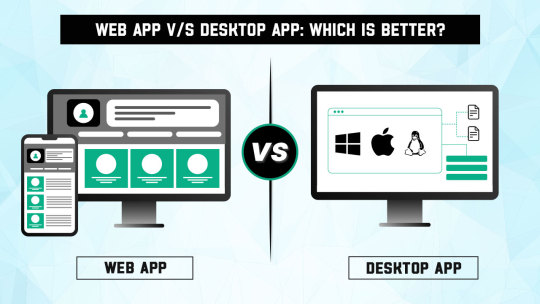
In today’s digital age, businesses of all sizes realize the importance of having a robust online presence. This has led to businesses facing the dilemma of choosing between web apps and desktop apps. Each has its own set of strengths and limitations, and businesses need to consider different factors to make the right choice. Going through this article, we shall break down the differences based on various aspects such as accessibility, user experience, development and maintenance, offline capability, and security.
What is Desktop Application?
A desktop application, also known as a desktop app or a native app, is a software program designed to run on a desktop-specific operating system, such as Windows, macOS, or Linux. It is installed directly onto a user’s computer or laptop. It utilizes the resources and capabilities of the user’s device to perform all different actions, such as complex calculations, real-time data processing, and resource-intensive operations. They often offer offline functionality, allowing users to access the application and its features even without an internet connection.
What is a Web Application?
A custom web application is a software program designed and developed for an organization or business to run from any web browser. Web apps are hosted on remote servers and can be accessed from any device with a compatible browser and an internet connection. They are highly accessible, enabling users to access and use the application from various devices, including computers, tablets, and smartphones. Web apps require a constant internet connection as it relies on server-side processing, storing and retrieving data from databases, and can provide real-time collaboration and synchronization capabilities.
Web App vs. Desktop App: Key Differences
The choice between desktop and web app can be determined when compared on different aspects:
Accessibility
When it comes to accessibility, web apps hold a significant advantage. These applications run within web browsers, making them accessible from any internet-enabled device. Whether you’re using a computer or handheld device such as a tablet or smartphone, as long as you have a compatible browser, you can access the web app seamlessly.
On the other hand, desktop apps are installed directly on a user’s computer and are often designed for specific operating systems. This leads to a more integrated and optimized user experience, but it also limits severely limits accessibility.
Platform Independence
Web apps are platform-independent, eliminating the need for separate versions to cater to different operating systems. This versatility makes choosing a web app development service excellent for reaching a broad audience and ensuring consistent user experience across devices.
Users must install the correct desktop application variant based on their device OS, which may be a barrier for some. This is not entirely spoilsport as for specific niche applications that require deep system integration, such as video editing software or resource-intensive games, desktop apps offer a more tailored and performance-driven experience.
User Experience and Performance
User experience plays a vital role in the success of any application. Web apps have come a long way in providing a pleasant user experience, thanks to advancements in web technologies. However, they still face certain limitations due to browser constraints and network latency. The performance of web apps can vary depending on factors such as the user’s internet connection speed and browser capabilities. Despite these challenges, custom web app development services have gained popularity due to their ability to deliver cross-platform compatibility and rapid updates without requiring users to install new versions manually.
In contrast, desktop apps generally offer a smoother and more responsive user experience. Since they run directly on the user’s computer, they have access to system resources and can leverage the full potential of the underlying hardware. This advantage makes desktop apps well-suited for tasks requiring intensive processing, such as 3D rendering, complex calculations, or real-time data manipulation. However, desktop apps may require more frequent updates and potentially involve a longer development cycle to ensure compatibility across different operating system versions.
Development and Maintenance
When it comes to development and maintenance, web apps have several advantages. They are typically faster and more cost-effective to develop compared to desktop apps. Web development relies on widely supported technologies like HTML, CSS, and JavaScript, with large developer communities and abundant resources. This availability of talent and resources can streamline the development process and facilitate easier troubleshooting.
Moreover, web apps simplify maintenance and updates. Developers can release new features or bug fixes by updating the server-side code, ensuring that users always have access to the latest version without needing to perform additional installations. This seamless upgrade process reduces the burden on both developers and end-users. Check out the latest trends in web app development.
Desktop apps, however, often require specialized programming languages and frameworks, which may have a steeper learning curve and demand more technical skills. Building one using a desktop app development services may take longer and incur higher development costs, especially if you intend to target multiple operating systems. Furthermore, maintaining desktop apps involves distributing updates to end-users, who must manually install new versions. This process can be more cumbersome, but it provides more control over the user’s environment and avoids potential compatibility issues introduced by automatic updates.
Offline Capability
The offline capability of an application can be a critical factor in specific contexts. Web apps rely on an internet connection to function fully, and they may have limited or no functionality when offline. This limitation can be a drawback for users who require constant access to an application’s features, especially in areas with unreliable or limited internet connectivity.
In contrast, desktop apps offer the advantage of running offline. Users can access the application’s functionalities and data without being connected to the internet, ensuring uninterrupted usage and productivity. This advantage makes desktop apps preferred for applications that demand offline functionality, such as productivity tools or resource-intensive software.
Security
Regarding security, both web apps and desktop apps have their own considerations. Web apps are exposed to potential web-based vulnerabilities and attacks, making robust security measures essential. Developers must implement proper authentication mechanisms, data encryption, and protection against cross-site scripting (XSS) and SQL injection attacks to ensure the security of user data.
On the other hand, desktop apps can implement robust security measures by leveraging the capabilities of the underlying operating system. With local data storage and direct control over access permissions, developers have greater control over securing sensitive data. However, this also means that users are responsible for keeping their systems updated with the latest security patches and updates to protect against potential vulnerabilities.
Which to Choose?
There is no definitive winner in the web app vs. desktop app debate. The choice depends on the specific requirements and priorities of your project. Web apps excel in terms of accessibility, ease of development, and seamless updates. Desktop apps offer a more optimized user experience, better performance for resource-intensive tasks, and the ability to work offline.
The web app is more suited for businesses that allow remote access and wish mobility over sheer performance. The desktop app is suited for businesses that can do away with internet connection and don’t mind sacrificing mobility for raw performance.
Wrapping Up
Irrespective of what most state, companies looking to diversify their offerings opt for a web app as it allows remote access and device-independent operations. However, to derive the most from what your web app has to offer, it is critical to partner with a trusted custom web app development company such as Vindaloo Softtech. We have successfully delivered innovative web app solutions to its clients since 2016. Get in touch with your requirements today.
#Custom app development#desktop app development#desktop app development services#Web App Development Services#web application development company#Vindaloo Softtech
0 notes
Text
Diseño web
¡Hola! Les dejo mi servicio de diseñadora web, si me ayudan a compartirlo les agradecería. <3
#web designer#design#designer ux/ui#ux/ui#figma#figmadesign#uxdesign#ui ux development services#web development#mobile app development#mobile games#desktop#website#graphic design#creative
7 notes
·
View notes
Text
How IT Services Are Powering Every Industry Today
In today’s fast-paced digital era, IT services are no longer industry-specific—they are industry-defining. From fields and factories to fashion runways and hospital rooms, technology is shaping a smarter, more efficient future for everyone.
In agriculture, smart farming tools like AI-driven crop monitoring and automated irrigation systems are empowering farmers to make informed decisions and boost productivity. Meanwhile, the education sector is experiencing a digital revolution with e-learning platforms, AI tutors, and virtual classrooms, making quality education more accessible than ever.
Retailers are embracing intelligent systems—AI-powered POS, automated inventory, and seamless e-commerce—to elevate customer experiences and streamline operations. In the fashion world, 3D design software, AR try-ons, and AI-powered trend forecasting are redefining how styles are created and consumed.
Healthcare, one of the most critical industries, is being transformed through AI diagnostics, smart patient analytics, and telemedicine—offering faster, data-backed care that saves lives.
At AppCurators Technologies, we build tech-driven solutions tailored to each industry’s unique needs. No matter your sector, our IT services bring innovation, automation, and impact to your operations.
📩 Let’s build the future together! 📧 [email protected] | 📞 +91-9258101930, +91-9258101936 #ITForBusiness #SmartSolutions #TechInnovation #DigitalTransformation
#appcurators#gaming apps#software solutions#gaming app development#web application services#desktop application development services#real money game development services#back end web architecture#mobile app development#app development
0 notes
Text
Desktop App Development Services
Enhance your business's potential with our desktop app development solutions. Our focus is developing custom desktop app software that improves productivity and user satisfaction. Our experienced professionals will help if you need our assistance in increasing efficiency or organizing data. We develop robust, scalable, secure desktop apps tailored to your business needs. These solutions boost efficiency and drive growth for small startups and large enterprises. We create them for the specific needs of every business that we have. Allow us to turn your concepts into a fully functional desktop application that will positively impact today's market.
Essential Features of Desktop App Development Services
Custom Solutions for Every Industry: For your business needs, which could be web, desktop, cloud, or IoT, we deliver tailored.NET applications.
High Performance and Scalability: We built our applications to take high loads and scale with your business.
Robust Security: We have advanced security protocols to protect your data and keep us compliant.
Cross-Platform Compatibility: Build great apps across Windows, macOS, and Linux
Faster Time-to-Market: Agile methodologies and a great toolset accelerate development.

Common Frameworks Used in Desktop App Development
Electron.js
Ideal for creating cross-platform apps with web technologies like JavaScript, HTML, and CSS.
.NET (WPF & WinForms)
Perfect for building Windows-based enterprise applications.
Qt
A versatile framework for creating high-performance, cross-platform applications
JavaFX
Great for rich desktop applications with modern UI/UX designs.
Python (Tkinter, PyQt)
Best for lightweight, scalable desktop solutions.
Benefits of Desktop Apps
High Performance
Desktop apps run directly on devices, offering superior speed and responsiveness.
Offline Access
Unlike web apps, desktop applications work without an internet connection.
Enhanced Security
Local storage of sensitive data reduces exposure to online threats.
Customization
Fully tailored solutions to match your business operations and workflows.
Scalability
Built to evolve with your growing business demands.

#desktop application development services#itsolutions#software development#app development#android software#ai generated#clouds#hbittechnology
0 notes
Text

#software development company#mobile app development services#web application development company#software development services#desktop application development services
0 notes
Text
How 3D CAD Helps Engineers Perform Thermal Analysis for Spacecraft

The extreme conditions of space pose significant challenges for spacecraft design, particularly in thermal management. Spacecraft experience fluctuating temperatures, intense solar radiation, and the vacuum of space, all of which can impact performance. Thermal analysis is a critical step in spacecraft engineering, ensuring that systems remain operational under these harsh conditions. One of the most transformative tools in this process is 3D CAD (Computer-Aided Design). By integrating CAD with thermal analysis software, engineers can efficiently simulate, analyze, and optimize spacecraft designs.
The Role of Thermal Analysis in Spacecraft Design
Thermal analysis involves predicting how a spacecraft will behave thermally under various conditions. Engineers use simulations to evaluate heat transfer mechanisms such as conduction, convection (if applicable), and radiation. This process ensures that components stay within their operational temperature limits and identifies the need for heaters, radiators, or insulation layers to maintain thermal balance.
Spacecraft thermal analysis typically includes:
Modeling energy exchange factors: Calculating absorbed energy from orbital sources like the Sun and reflected planetary radiation.
Simulating heat dissipation: Predicting how internal components generate and transfer heat during operation.
Designing control systems: Determining heater power requirements and radiator sizing to regulate temperatures.
How 3D CAD Enhances Thermal Analysis
3D CAD tools revolutionize thermal analysis by enabling engineers to create detailed models of spacecraft geometry. These models serve as the foundation for simulations and allow engineers to visualize complex systems under varying environmental conditions. Here’s how 3D CAD contributes to thermal analysis:
1. Accurate Geometry Representation
Spacecraft designs often involve intricate geometries with multiple subsystems. 3D CAD software allows engineers to create highly detailed models that account for every component's size, shape, and orientation. Tools like NX Space Systems Thermal simplify the modeling of large assemblies without requiring manual geometry conversions. This level of detail ensures accurate predictions during simulations.
2. Integration with Thermal Analysis Software
Modern CAD tools are seamlessly integrated with thermal analysis software such as Thermal Desktop or Simcenter 3D Space Systems Thermal. These integrations enable engineers to import CAD models directly into simulation environments without losing fidelity. For example:
Thermal Desktop uses AutoCAD-based models to compute radiative exchange factors and orbital heating via Monte Carlo methods.
Simcenter 3D synchronizes CAD data automatically, reducing errors and improving efficiency during iterative design processes.
3. Material Property Assignment
Thermal performance depends heavily on material properties like conductivity, emissivity, and specific heat capacity. CAD-based tools often include databases of thermophysical properties, allowing engineers to assign realistic materials to spacecraft components. This capability ensures that simulations reflect real-world behavior.
4. Visualization and Post-Processing
Engineers can use CAD-integrated tools to visualize temperature distributions across spacecraft surfaces in 3D. Features like contour plots or scatter plots make it easier to identify hotspots or areas requiring additional thermal control measures. Visualization enhances collaboration among teams by presenting complex data in an intuitive format.
Applications of 3D CAD in Spacecraft Thermal Analysis
Orbital Simulations
Orbital mechanics significantly influence a spacecraft's thermal environment due to changing positions relative to the Sun and Earth. Engineers use 3D CAD models to simulate these dynamics and predict temperature fluctuations over time. For instance, NX Space Systems Thermal enables orbital simulations with synchronized geometry updates for evolving designs
Component-Level Analysis
Thermal analysis extends beyond the spacecraft as a whole—it includes evaluating individual subsystems like electronics or propulsion units. Tools like Solaria Thermal specialize in finite element analysis (FEA) for detailed component-level simulations. Engineers can model copper layers in PCBs or heat dissipation from rocket engines using these tools.
Iterative Design Optimization
Thermal analysis is an iterative process involving multiple design revisions. With CAD-integrated software, engineers can quickly update models based on simulation results without starting from scratch. This agility accelerates development timelines while improving accuracy.
Benefits of Using 3D CAD for Thermal Analysis
The integration of 3D CAD with thermal analysis software offers several advantages:
Efficiency: Automated synchronization between CAD models and simulation tools reduces manual effort.
Accuracy: Detailed geometry and material property assignments result in more reliable predictions.
Cost Savings: Virtual testing minimizes the need for expensive physical prototypes.
Collaboration: Intuitive visualizations enhance communication among engineering teams.
Conclusion
In the realm of spacecraft engineering, thermal analysis is indispensable for ensuring mission success under extreme conditions. The integration of 3D CAD tools with advanced simulation software has streamlined this process, enabling engineers to design more robust systems efficiently. From orbital simulations to component-level evaluations, these tools provide unparalleled accuracy and visualization capabilities.
As space exploration continues to push boundaries, the role of 3D CAD design services in thermal analysis will only grow more critical, empowering engineers to tackle increasingly complex challenges with confidence. Whether designing satellites for Earth's orbit or interplanetary missions, leveraging these technologies ensures that every spacecraft is prepared for its journey into the unknown.
#Thermal Analysis in Spacecraft Design#Spacecraft Design#Thermal Analysis#3D CAD Design#3D CAD Design Services#3d app development services#3d application development#3d mobile app development#3d desktop application development#3d desktop application#3d desktop application development companies#best 3d application development company#3d engineering application development services#3D application development for engineering#3D development tools for engineering applications#3d web application development services#3d mobile application development
0 notes
Text
Premier ReactJS Development Services | Expert ReactJS Developers
Discover top-tier ReactJS development with our leading team of experts. At techdev.se, we offer customized ReactJS solutions designed to meet your unique needs. Hire our skilled ReactJS developers for affordable, high-quality services that drive results.
#ReactJS development services#reactjs development#react native app development company#react native development company#api development#react native development services#front end development#full stack development#back end developer#react redux#UI Ux development#android#git#web application development#web developer#desktop app#electron app
1 note
·
View note
Text
Expert Wireframing and Prototyping Services
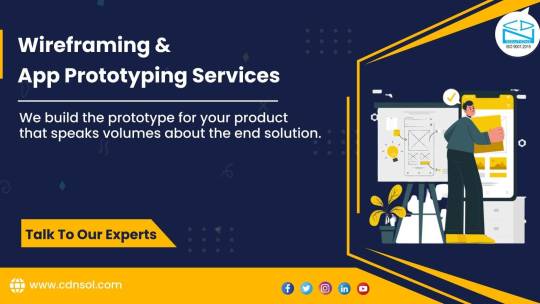
Need expert wireframing and prototyping services? Our experienced team provides app prototyping, wireframe design, and UX consultancy for mobile, web, and desktop applications. From concept to prototype, we help you visualize, test, and perfect your app’s design before full development. Whether you're looking for mobile app wireframing or complete prototyping solutions, our services ensure a seamless design process for your project. Visit now to know more: https://www.cdnsol.com/wireframing-and-app-prototyping
#wireframing and prototyping services#app prototyping services#application wireframe design services#prototyping and consultancy#experience prototype consultants#wireframe and prototype design services#app prototyping company#user experience prototyping consultancy#wireframing and prototyping development firm#wireframing and prototyping tools#mobile app prototyping services#app prototyping and wireframing services#wireframing and app prototyping#mobile app wireframing#web apps wireframing#desktop app wireframing
0 notes
Text
"A Deep Dive into Fiverr's Programming & Tech Services"
Introduction In the dynamic landscape of technology, innovation propels us forward, bridging the gap between creativity and functionality. Within this realm, Fiverr’s Programming & Tech category emerges as a digital agora, where skilled freelancers converge to offer their technical expertise. With the tap of a button, individuals and businesses can access a multitude of programming and tech…
View On WordPress
#Cybersecurity and Data Protection Solutions#Database Design and Management Services#Desktop Application Creation#Digital Services Marketplace#E-Commerce Development Experts#Expert Tech Services Online#Fiverr Programming Services#Game Development Professionals#Mobile App Developers#Programming & Tech Services#Tech Freelancers on Fiverr#Top Tech Talents on Fiverr#Virtual Collaboration for Tech Projects#Web Development Solutions
1 note
·
View note
Text
More "AI" nonsense. This time it's eBay that has opted everyone in automatically.
And once again the setting doesn't seem to show up in the app or even the mobile website. You have to load the desktop version of the site, click your name in the top left, then click Account Settings, then AI Training Preferences to disable it.
186 notes
·
View notes
Text
Vindaloo Softtech soars to new heights at ITExpo 2024: Unveiling next-gen solutions alongside tech titans

Vindaloo Softtech soars to new heights at ITExpo 2024: unveiling next-gen solutions alongside tech titans
India, February 1, 2024- As ITExpo, one of the largest and longest-running business technology events, approaches, Vindaloo Softtech is pleased to announce its participation from booth 567. It will showcase its innovations and contribute to the dynamic discussions shaping the future of business technology.
Vindaloo Softtech revolutionizes businesses with top-notch IT solutions. From FreeSWITCH and WebRTC solutions to Asterisk development, Web and Mobile App creation, Custom CRM development, and Augmented Team services, it reshapes business operations, empowering clients to thrive in the dynamic digital landscape.
“We are thrilled to be part of ITEXPO, where over 7,000 business and technology professionals are expected to gather. At the event, we look forward to presenting our innovative solutions that can empower businesses to shape their future,” expressed Bhaskar Metikel, the Founder of Vindaloo Softtech Pvt. Ltd.
About Vindaloo Softtech
Vindaloo Softtech fixes its position as an industry leader in IT staff augmentation, providing cost-effective and innovative solutions to empower businesses. With expertise across VoIP Software Development, Front-End Development, Back-End Development, Mobile and desktop App Development, Web Services, Digital Marketing, and UI/UX Design, Vindaloo ensures its clients stay ahead of the curve, offering the latest and greatest in technological capabilities. The customer remains at the core of Vindaloo Softtech’s operating philosophy. With meticulous attention to each engagement and unwavering commitment to service excellence, Vindaloo has emerged as a trusted partner for a diverse client base.
The innovation infused into Vindaloo Softtech’s products highlights the technical expertise and customer dedication that set them apart from peers. VoIP solutions like the VoIP Billing System- CloveKonnect, Multi-Tenant IP PBX- PepperPBX, Cross-Platform VoIP Softphone- PimentoPhone, and Call Center Software-Callcentr8, exhibit Vindaloo’s passion for developing technologies that empower. By blending leading-edge capabilities with responsive, tailored service, Vindaloo Softtech establishes itself as a partner that grows with its clients and helps propel their visions forward.
About ITExpo
ITEXPO is a leading IT and communications event for business professionals seeking strategies and solutions to leverage emerging technologies. Taking place from 13th to 15th Feb at Florida ITEXPO offers a robust conference program covering topics like cloud communications, AI, 5G, IoT, generative AI, and cybersecurity. Attendees can expect keynotes from industry experts, educational sessions, an expo hall showcasing the latest products and innovations, and ample networking opportunities.
Organizations from IT, telecom, development, operations, and cybersecurity will gain actionable insights for strategic decision-making and to spur digital transformation. With over 5,000 estimated attendees and 350+ exhibitors, ITEXPO promises an immersive experience to learn, connect, and drive technology forward.
To know more about the event or Vindaloo’s services, contact us at [email protected].
#Augmented Team#Call Center Software#Cross platform voip softphone#Custom CRM Development Services#desktop app development#FreeSWITCH development#Multi Tenant IP PBX Solution#VoIP Billing System#VoIP software development#VoIP solutions
0 notes
Text
Blocking Ads on Mobile Devices
Blocking ads on our phones is way harder than it should be so I figured I'd make some recommendations. These are not the only options out there, just the ones that I know and have used.
Please note that browser-level and system-level adblocking are complementary; you'll have the best experience if you use both of them together as they each block different things in different places. If you want a basic idea of how effective your combined adblocking setup is, you can visit this website in your mobile browser.
Lastly, there is some additional advice/info under the readmore if you're curious (EDIT: updated March 2025 to add more adblocking options for iOS and to add info about sideloading altered versions of social media apps that don't contain ads on Android and iOS).
Android
Browser-Level
uBlock Origin (for Firefox)
System-Level (works in all apps, not just browsers)
AdGuard
Blokada 5 (completely free version) OR Blokada 6 (has some newer features but they require a subscription)
iPhone/iPad
Browser-Level
AdGuard (Safari extension; free for basic browser-level blocking, requires a subscription or one time purchase of “lifetime” license for custom filters)
1Blocker (Safari extension from an indie developer; can enable one built-in or custom filter list for free, requires a subscription or one time purchase of “lifetime” license for enabling multiple filter lists and updating filter lists to the latest version automatically)
Wipr 2 (one time purchase from indie developer; simplest option to use, but also the least configurable. Best if you are looking for one time set and forget and don’t need any custom filters. Note that it does not have a system-level blocking option)
System-Level (works in all apps, not just browsers)
AdGuard (requires subscription or one time purchase of “lifetime” license for system-level blocking)
1Blocker (can activate without a subscription, but requires subscription or one time purchase of “lifetime” license to enable system-level blocking AND browser-level blocking simultaneously)
AdGuard DNS only (this is free and does not require the AdGuard app, BUT I would only recommend it for advanced users, as you can't easily turn it off like you can with the app. Credit to this Reddit thread for the DNS profile)
Some additional info: browser-level blocking is a browser addon or extension, like you might be used to from a desktop computer. This inspects the HTML code returned by websites and searches for patterns that identify the presence of an ad or other annoyance (popup videos, cookie agreements, etc.). System-level blocking is almost always DNS-based. Basically whenever an app asks your phone's OS to make a connection to a website that is known for serving ads, the system-level blocker replies "sorry, I don't know her 🤷♂️💅" and the ad doesn't get downloaded. This works in most places, not just a browser, but be warned that it might make your battery drain a little faster depending on the app/setup.
Each of those types of blocking has strengths and weaknesses. System-level DNS blocking blocks ads in all apps, but companies that own advertising networks AND the websites those ads are served on can combine their services into the same domain to render DNS blocking useless; you can’t block ads served by Facebook/Meta domains without also blocking all of Facebook and Instagram as well because they made sure their ads are served from the same domain as all the user posts you actually want to see. Similarly, browser-level blocking can recognize ads by appearance and content, regardless of what domain they’re served from, so it can block them on Instagram and Facebook. However, it needs to be able to inspect the content being loaded in order to look for ads, and there’s no way to do that in non-browser apps. That’s why using both together will get you the best results.
These limitations do mean that you can’t block ads in the Facebook or Instagram apps, unfortunately, only in the website versions of them visited in your browser. It also means ads served by meta’s/facebook’s ad network in other apps can’t be blocked either (unless you're one of the rare beasts who doesn't use facebook or instagram or threads, in which case feel free to blacklist all Meta/FB domains and watch your ads disappear 😍; I'm jealous and in awe of you lol).
One note: some apps may behave unpredictably when they can't download ads. For example, the Tumblr app has big black spaces where the ads are, and sometimes those spaces collapse as you scroll past them and it messes up scrolling for a few seconds (UPDATE: looks like the scrolling issue may have actually been a Tumblr bug that they have now fixed, at least on iOS). Still way less annoying than getting ads for Draco Malfoy seduction roleplay AI chatbots imo though. And honestly *most* apps handle this fairly gracefully, like a mobile game I play just throws error messages like "ad is not ready" and then continues like normal.
One final note: on Android, you may actually be able to find hacked versions of Meta’s apps that have the ad frameworks removed. In some cases they are a little janky (unsurprisingly, apps don’t always take kindly to having some of their innards ripped out by a third-party), and they are often out of date. BUT in return you get an Instagram app with no ads whatsoever, and some of them even add additional features like buttons for saving IG videos and photos to your phone. However, use these apps at your own risk, as there is functionally no way to validate the code that the third-parties have added or removed from the app. Example altered IG app (I have not vetted this altered app, it's just a popular option): link.
It is technically possible to install altered apps on iOS as well, but Apple makes it much, much harder to do (unless you are jailbroken, which is a whole different ballgame). I'm not going to cover sideloading or jailbreaking here because even I as a very techy person eventually grew tired of messing with it or having to pay for it. If you're interested you can read more about the different ways to do sideloading on iOS here.
#adblockers#ad blocking#digital privacy#internet privacy#firefox#firefox extensions#mine#adguard#blokada#android#ios#iphone
513 notes
·
View notes
Text

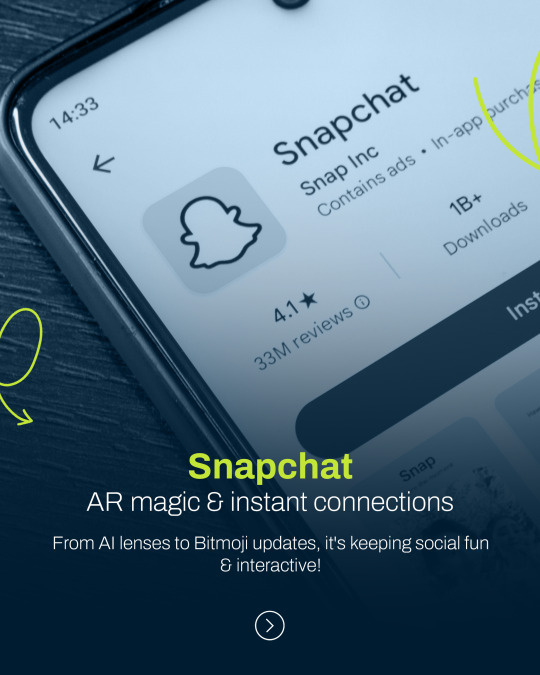
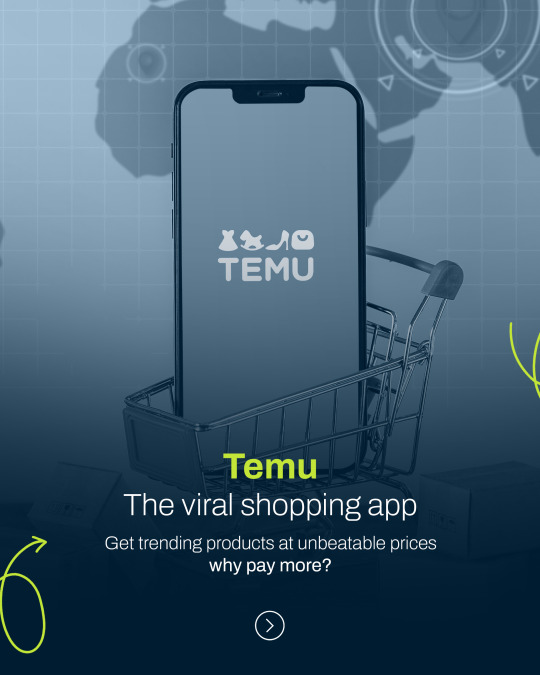

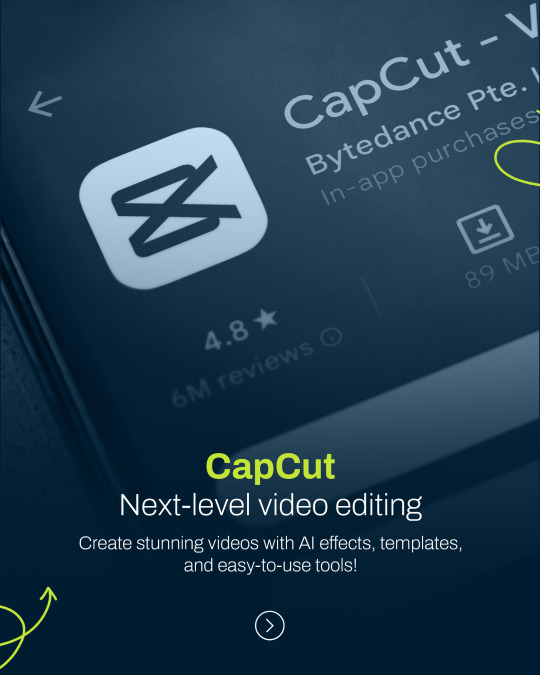
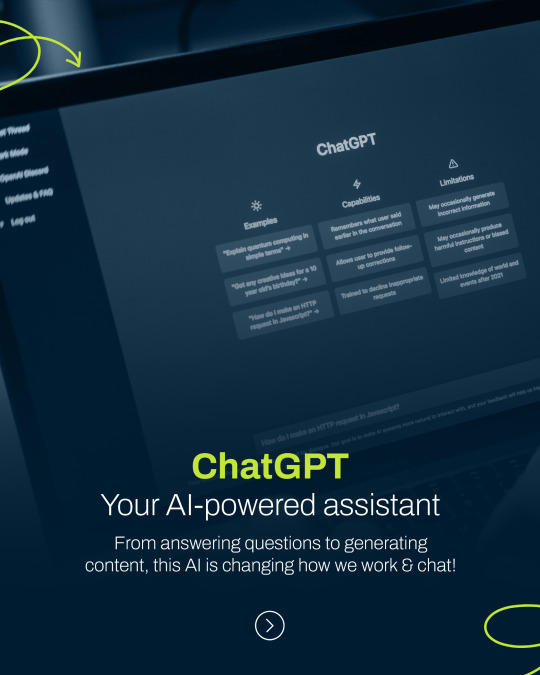

🚀 Must-Have Apps of 2025! 📱✨ From AI chat to next-level video editing, these apps are changing the game! Which one is your favorite? 🤔👇
#BestApps2025 #TrendingApps #ChatGPT #CapCut #Instagram #Temu #Snapchat
#gaming apps#mobile app development#real money game development services#desktop application development services#back end web architecture#ludo gaming app#mobile apps
0 notes
Text
ever wonder why spotify/discord/teams desktop apps kind of suck?
i don't do a lot of long form posts but. I realized that so many people aren't aware that a lot of the enshittification of using computers in the past decade or so has a lot to do with embedded webapps becoming so frequently used instead of creating native programs. and boy do i have some thoughts about this.
for those who are not blessed/cursed with computers knowledge Basically most (graphical) programs used to be native programs (ever since we started widely using a graphical interface instead of just a text-based terminal). these are apps that feel like when you open up the settings on your computer, and one of the factors that make windows and mac programs look different (bc they use a different design language!) this was the standard for a long long time - your emails were served to you in a special email application like thunderbird or outlook, your documents were processed in something like microsoft word (again. On your own computer!). same goes for calendars, calculators, spreadsheets, and a whole bunch more - crucially, your computer didn't depend on the internet to do basic things, but being connected to the web was very much an appreciated luxury!
that leads us to the eventual rise of webapps that we are all so painfully familiar with today - gmail dot com/outlook, google docs, google/microsoft calendar, and so on. as html/css/js technology grew beyond just displaying text images and such, it became clear that it could be a lot more convenient to just run programs on some server somewhere, and serve the front end on a web interface for anyone to use. this is really very convenient!!!! it Also means a huge concentration of power (notice how suddenly google is one company providing you the SERVICE) - you're renting instead of owning. which means google is your landlord - the services you use every day are first and foremost means of hitting the year over year profit quota. its a pretty sweet deal to have a free email account in exchange for ads! email accounts used to be paid (simply because the provider had to store your emails somewhere. which takes up storage space which is physical hard drives), but now the standard as of hotmail/yahoo/gmail is to just provide a free service and shove ads in as much as you need to.
webapps can do a lot of things, but they didn't immediately replace software like skype or code editors or music players - software that requires more heavy system interaction or snappy audio/visual responses. in 2013, the electron framework came out - a way of packaging up a bundle of html/css/js into a neat little crossplatform application that could be downloaded and run like any other native application. there were significant upsides to this - web developers could suddenly use their webapp skills to build desktop applications that ran on any computer as long as it could support chrome*! the first applications to be built on electron were the late code editor atom (rest in peace), but soon a whole lot of companies took note! some notable contemporary applications that use electron, or a similar webapp-embedded-in-a-little-chrome as a base are:
microsoft teams
notion
vscode
discord
spotify
anyone! who has paid even a little bit of attention to their computer - especially when using older/budget computers - know just how much having chrome open can slow down your computer (firefox as well to a lesser extent. because its just built better <3)
whenever you have one of these programs open on your computer, it's running in a one-tab chrome browser. there is a whole extra chrome open just to run your discord. if you have discord, spotify, and notion open all at once, along with chrome itself, that's four chromes. needless to say, this uses a LOT of resources to deliver applications that are often much less polished and less integrated with the rest of the operating system. it also means that if you have no internet connection, sometimes the apps straight up do not work, since much of them rely heavily on being connected to their servers, where the heavy lifting is done.
taking this idea to the very furthest is the concept of chromebooks - dinky little laptops that were created to only run a web browser and webapps - simply a vessel to access the google dot com mothership. they have gotten better at running offline android/linux applications, but often the $200 chromebooks that are bought in bulk have almost no processing power of their own - why would you even need it? you have everything you could possibly need in the warm embrace of google!
all in all the average person in the modern age, using computers in the mainstream way, owns very little of their means of computing.
i started this post as a rant about the electron/webapp framework because i think that it sucks and it displaces proper programs. and now ive swiveled into getting pissed off at software services which is in honestly the core issue. and i think things can be better!!!!!!!!!!! but to think about better computing culture one has to imagine living outside of capitalism.
i'm not the one to try to explain permacomputing specifically because there's already wonderful literature ^ but if anything here interested you, read this!!!!!!!!!! there is a beautiful world where computers live for decades and do less but do it well. and you just own it. come frolic with me Okay ? :]
*when i say chrome i technically mean chromium. but functionally it's same thing
462 notes
·
View notes